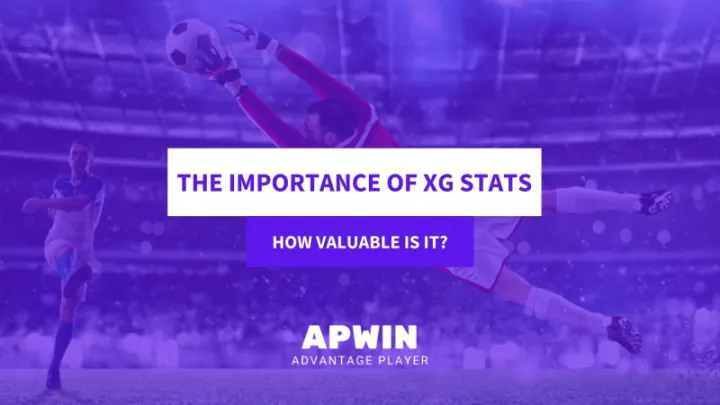In football, the term xG, which stands for 'expected goals', calculates the chance of certain shots that turn into a goal.
By looking at the historical data set of shots taken and the ones that become a goal, expected goals can show how many goals you can expect from an average team from their shots.
For example, a 1.00 xG indicates a guaranteed goal, which doesn't exist. However, the probability of an xG of 0.40 means that if a shot was taken ten times, the chances are that four of the shots would hit the back of the net.
How Are Expected Goals Calculated?
Expected goals calculate the quality of goalscoring chances and the probability of them being scored, so how is it calculated?
It might be simpler than you think, as the shot's quality is measured on some variables, all of which should be familiar to any knowledgeable football fan.
As explained in our previous expected goals guide, the variables include shot angle, type of assist, distance from goal, was it a header? Was it a big chance? Did it happen in open play?
For example, if a shot is closer to the goal, then you would expect xG to be higher; this is indeed the case. However, headers have a lower xG than shots, and so on.
Can xG Tell Us Something?
Even though it's already popular among football stats enthusiasts and the community, the debate still goes on around what information we can obtain from expected goals.
Jeff Stelling, the presenter of Sky Sports, views xG as "the most useless stat in the history of football" with this statement shared by many people. Stelling will say that if a team wins 1-0 against the play run, that's how football goes. They get the three points, whatever the expected goals may show or any metrics in regards to it.
Indeed, this is true and no one disagrees with that. However, what expected goals can do is indicate the number of goals a team or player can score on average, based on the shots they make.
Therefore, when you hear a commentator or your friend say, "Vardy should have scored it" or "Arsenal were so lucky to win," you can look at the data to support those claims or deny it.
How Valuable is xG for Football Betting?
Football bettors are always interested in ways to get them on the winning edge, and if xG is used correctly, it can offer some great winning opportunities. In football, the final score doesn't always tell the whole story due to the low-scoring nature of the sport.
For example, when Liverpool finished a 1-1 draw with Burnley with their xG of 2.18, Burnley had a much lower xG at 0.45. However, this doesn't mean that Liverpool had more and better chances compared to Burnley, as Burnley has better chances to score more goals. We suggest that you watch the match, or at the least the highlights once the match is over. Expected goals can, therefore, give you concrete data that supports this gut feeling. So, if you're a football bettor, you can use a team's xG to analyze their form based on past performances instead of the results.
Risk of Using Expected Goals in Football Betting
By looking at the team and player performances can help to predict upcoming matches and long-term trends. But keep in mind that you can expect teams or players that outperform their xG data to eventually return to their basic stats over time. However, this also doesn't have to be the case, as some football teams have consistently outperformed their xG models for a number of seasons.
In addition, xG data can be invalidated for several reasons, depending on how a match turns out. For example, when a team scores early in a game, they may decide to take it easy and just protect their lead. This can reduce their xG but doesn't mean they aren't performing well, especially if they've managed to hold it until the end. Besides that, an attacking team may also have their xG figures affected by a wall of defenders blocking their shots.
Another thing to note when you're looking at xG data is that offsides are not included. This is true even if they were close decisions and had a good chance of scoring a goal. However, false calls should now be less of an issue, especially due to the birth of VAR.
Conclusion
No stats or indicators can perfectly predict a football game, as there's too much going on around the field. But if we correctly use stats like xG, you can certainly use it to your advantage for betting on football. Just like other stats or metrics, it's best used in context alongside tactical or video analysis.
We hope this article has helped you understand xG and how you can use it to make more money in football betting! Make sure to visit APWin for the latest football stats and guides to help you gain the edge in football.



